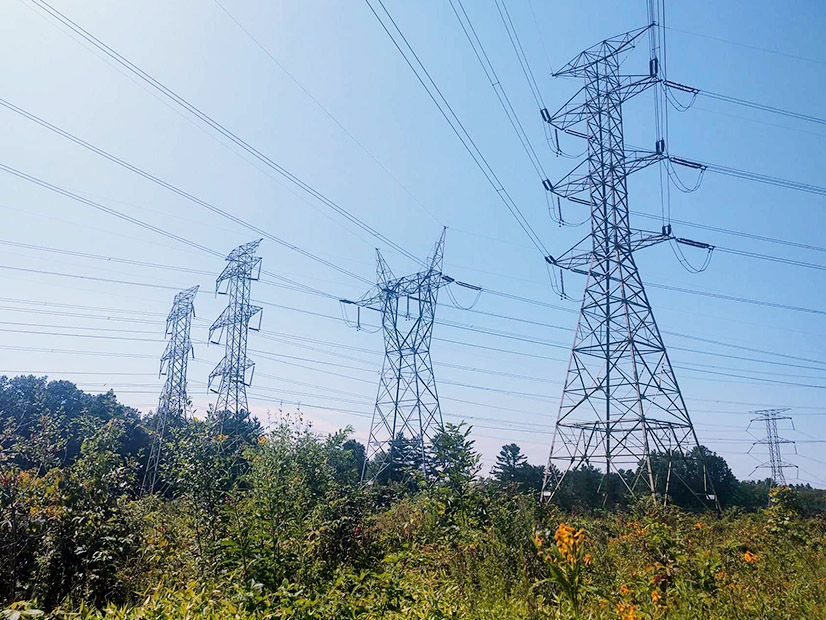A new coalition called Transmission Possible launched Jan. 25 to support local, state and federal efforts to expand transmission, while a recent paper from the National Bureau of Economic Research (NBER) put some numbers on an issue that has often complicated those efforts.
The new group is led by Advanced Energy United, and it includes the American Council on Renewable Energy, Americans for a Clean Energy Grid, the National Wildlife Federation, the Environmental League of Massachusetts and the Northeast Energy Council.
“Much of America’s transmission infrastructure was built in the 1950s and ’60s, and even though the technology has come a long way since then, we really haven’t made any significant improvements to the grid in 70 years,” said Verna Mandez, a director at Advanced Energy United who is overseeing Transmission Possible. “America and its energy needs are growing, and building interregional transmission lines is the way we ensure we have a reliable power grid that cost-effectively delivers energy from where it’s generated to where it’s needed.”
Transmission Possible’s campaign will encourage regional collaboration among states to plan lines across their transmission lines. It will endorse state policies that encourage the buildout of transmission lines.
The campaign will support deployment of immediate solutions to grid congestion, such as high-performance conductors and grid-enhancing technologies (GETs). It will also host a resource hub for decision-makers, stakeholders and the public about the role of transmission in ensuring grid reliability and accelerating the transition to clean energy.
Reaching the goal of 100% clean electricity by 2035 will require as many as 91,000 miles of new transmission lines over the next decade, while in the interim, the deployment of GETs could unlock as much as 40% more capacity from existing lines.
National Bureau of Economic Research Paper
A recent paper from the NBER put some firm numbers on a commonly cited barrier to transmission expansion: When lines open up isolated patches of the grid to greater competition, it cuts the prices for local generators.
“Power Flows: Transmission Lines and Corporate Profits” by Catherine Hausman, an associate professor at the University of Michigan’s Gerald R. Ford School of Public Policy, examined the issue using publicly available data on generators in MISO and SPP. While other papers have mentioned the issue of utilities trying to protect their generators’ income, Hausman estimated how fully expanding the two regions’ grids to fully tap their rich wind resources would impact generators’ profits.
The cost of transmission constraints has been on the rise, averaging $300 million to $400 million from 2016 to 2020, while spiking up to $2 billion in 2022 because of rising curtailments and higher natural gas prices.
“The transmission network until recently basically did what it needed to: connecting thermal power plants to load in population centers,” the paper said. “But in a world with increasing quantities of renewable generation, the existing network doesn’t match the spatial distribution of generation.”
Lower natural gas prices in the 2010s also flattened the marketwide marginal cost for electricity, which minimized the impact of constraints.
“But with natural gas prices surging up, the marginal cost curve has rotated, and dispatching the ‘wrong’ unit — because of something like a regional transmission constraint — has gotten much more expensive,” the paper said.
The $2 billion from 2022 could be justified if the cost of building new transmission is very high, but the paper noted that many grid observers have argued that the planning process does not lead to socially optimal investments, especially when it comes to long-distance lines crossing regions.
“The rise in wind energy in recent years has decreased profits for fossil incumbents — but crucially, by less than it would have had the market been fully integrated,” the paper said. “That is, fossil incumbents have been partially protected from new competitors by a lack of transmission.”
The overall impact masks important differences, with the paper finding that firms in MISO South (Entergy’s territory) would lose the most because it has poorer transmission connections to the rest of the market.
If the grid were fully expanded, just four firms would stand to lose $1.6 billion, or three-quarters of the total inefficiencies seen in 2022. In other years, the number would have been smaller, but those firms’ share would have been similar.
The firms that would have benefited the most are in Iowa, Illinois and Missouri, and they would have brought in about $1 billion in 2022, while wind farms would have earned an additional $800 million. The wind farms’ extra profit would have been spread wide across many facilities, though the paper noted that NextEra Energy owns many of them in the region.
Entergy Arkansas and Entergy Louisiana would lose the most from the expanded grid, at a combined $930 million in 2022. Renewable energy advocates and others have alleged that the firm has tried to delay or cancel transmission improvements, the paper said.
“The results in this section suggest that the current planning process is problematic given the fact that market integration is expected to bring very large losses to some incumbents,” the paper said.

